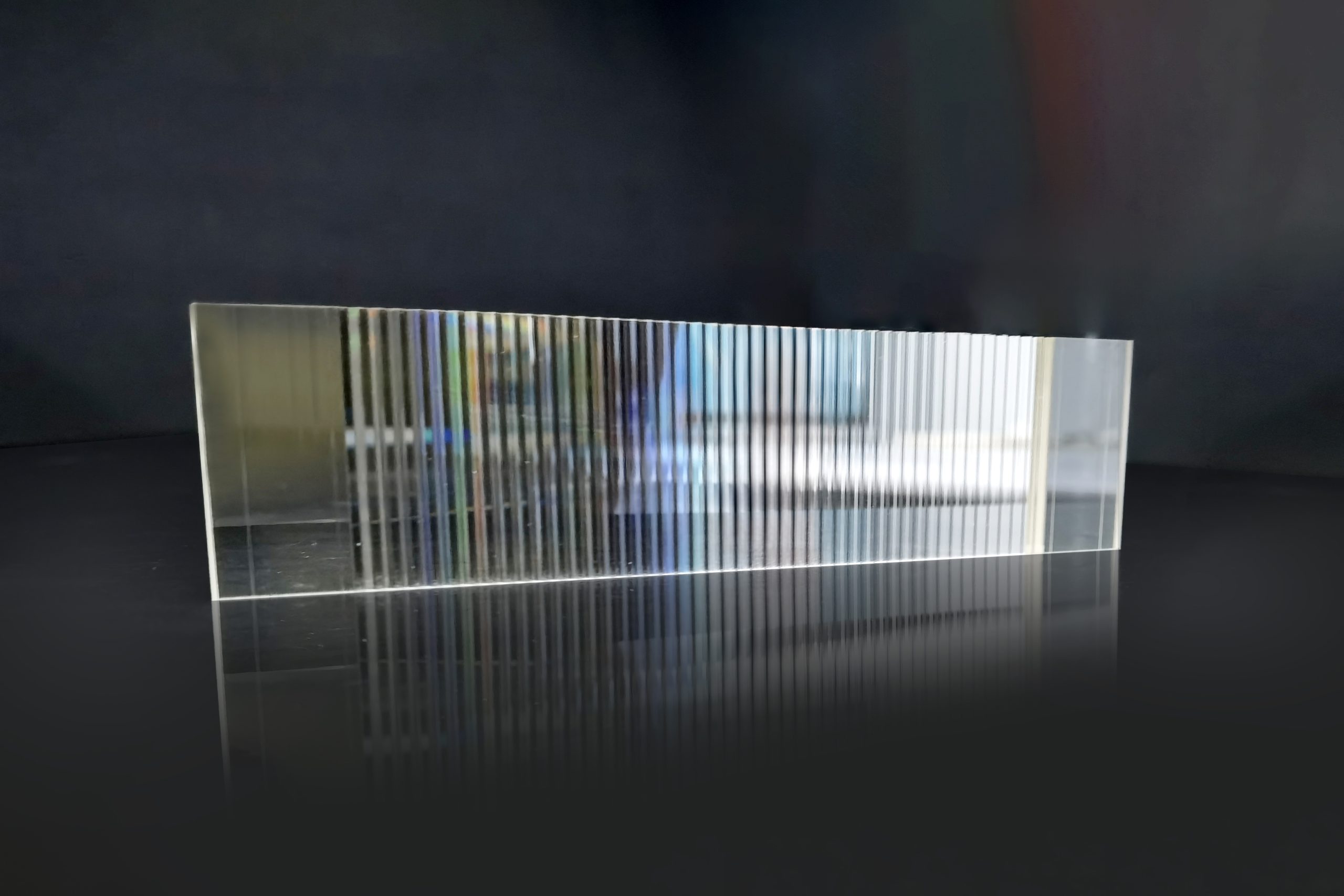High-precision micro prisms: How to achieve efficient mass production, high precision, and high consistency at the same time?
Wang Jianjun
Senior Engineer of Optical Cold Processing Technology, Laser Optics Business Unit of Focuslight
A prism is an object surrounded by intersecting but non-parallel planes. It is used to split light or disperse light beams. Typically, prisms are made of transparent materials like glass or crystal. In modern life, prisms are widely used in communications, digital equipment, science and technology, medical instruments, and many other fields. For example, optical communication and projection display applications, which have developed rapidly recently, require the use of prisms to achieve functions such as refraction and coupling of light. As the diameter of optical fibers and lasers is small, micro prisms (<2mm) can save equipment space by 55% compared with traditional equipment. This benefit increasingly broadens the potential applications of micro prisms. In consumer electronic devices such as the periscope cameras in mobile phones and the home-use projectors, micro prisms have already been an essential part.

Schematic diagram of the use of micro prisms for optical communication applications (left)
Schematic diagram of the use of micro prisms for projection applications (right)
Both applications have high requirements on the surface shape (flatness between λ/4-λ/10) and smoothness of micro prisms. In the production of regular prisms, manufacturers mostly use traditional grinding and polishing methods to process the optical surfaces. However, this process faces huge challenges in the production of micro prisms. Although some manufacturers can use advanced cutting methods to produce micro prisms of various lengths and sizes, there is no better processing method for optical surfaces to achieve high-volume and high-precision production, and there is currently no economical method to meet the huge market demand.
Applying the traditional grinding and polishing method to process optical surfaces, normally requires utilizing mount and optical glue techniques. This method has a long production process and consumes a large amount of material during product processing, resulting in higher overall production costs and lower efficiency. This process also requires a high technical level of operators, meaning an increased cost of personnel training required by enterprises or even consistency and quality problems under a high turnover rate of employees.
Focuslight uses its unique wafer-level simultaneous structuring process technology to process micro prism products, combining advanced laser cutting and CNC technologies, high-precision and high-reliability micro-nano measurement technology to achieve a great improvement of both production efficiency and production costs, without compromising any technical specifications.
1. Wafer-level simultaneous structured micro-nano optics manufacturing
At Focuslight, optical components are manufactured on a wafer base with Focuslight’s own wafer-level simultaneous structuring technology, which applies to any kind of inorganic optical material, such as glass, fused quartz, silicon, calcium fluoride, etc. Focuslight’s wafer-based production technology produces polished wafers up to 300 x 300 mm, making it possible to produce tens of thousands of lenses in a two-step process with a consistently high level of quality. It is a scalable and cost-effective production technology for very high quantities. The unique performance and cost advantages of this production technology have been fully reflected in fiber laser pump applications. As a major global supplier of fast axis collimators (FAC) for the fiber laser pumping market, Focuslight ships over 20 million pieces FACs per year.
2. Mass production of high-precision micro prisms using wafer-level simultaneous structuring technology

Prismatic micro-optical wafer
In the past, wafer-level simultaneous structuring technology was usually used in the manufacturing of cylindrical lenses. When this innovative technology is employed in the manufacturing of micro prisms, it enables the processing of micro prism units with the same or varying pitches on large optical wafers (e.g., 300mm x 300mm). This process exhibits exceptional consistency, extremely high processing efficiency, and can ensure precise angular and surface accuracy of micro prisms. This processing method achieves an efficiency that surpasses traditional grinding and polishing processes by over tenfold. Based on this processing technology, the product exhibits high consistency and accuracy that meet the requirements of many industries, effectively addressing the challenges they are facing.
For example, on the same micro-optical wafer, Focuslight can simultaneously manufacture micro prisms and special-shaped lenses with three or more different shapes according to the needs of customers in the optical communications sector (examples below). The tolerance of each angle is within ±0.01°, and the optical effective area PV is <0.16µm. We believe the mass production of high-precision micro prisms through wafer-level simultaneous structuring technology holds the potential for broader adoption in a variety of new application fields.

Micro prisms and special-shaped mirrors
With three decades of extensive experience in the optical components designing and manufacturing, Focuslight not only has the world's unique wafer-level simultaneous structuring technology in the field of micro-nano optics but also provides extensive processing services such as precision molding, cold processing, injection molding, nanoimprinting, etc. for inorganic material optics and organic polymer materials, and possesses self-developed high damage threshold optical coating capabilities. Leveraging its capabilities to offer a full spectrum of products and services, Focuslight aims to become a one-stop supplier of optical component solutions to customers.

About the Author:

Jianjun Wang, graduated from Changchun University of Science and Technology in 1988, majoring in optical technology and testing. He has been engaged in optical processing technology for 35 years and has extensive knowledge of optical processing industry technology. Jianjun joined Focuslight in 2021 and led the construction and product production of the cold processing production line.









 Return
Return Download
Download











